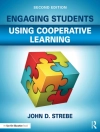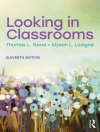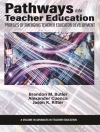By now it’s a given: if we’re to help our ELLs and SELs access the rigorous demands of today’s content standards, we must cultivate the 'code’ that drives school success: academic language. Look no further for assistance than this much-anticipated series from Ivannia Soto, in which she invites field authorities Jeff Zwiers, David and Yvonne Freeman, Margarita Calderon, and Noma Le Moine to share every teacher’s need-to-know strategies on the four essential components of academic language.
The subject of this volume is vocabulary. Here, Margarita Calderon reveals how vocabulary is best taught as a tool for completing and constructing more complex messages. With this book as your roadmap, you’ll learn how to:
- Teach high-frequency academic words and discipline-specific vocabulary across content areas
- Utilize strategies for teaching academic vocabulary, moving students from Tier 1 to Tiers 2 and 3 words and selecting appropriate words to teach
- Assess vocabulary growth as you go
Our vocabulary instruction must come from the texts our ELLs and SELs are about to read, not from a set of activities that teach words in isolation. This guidebook will help you get started as early as tomorrow. Better yet, read all four volumes in the series and put in place an all-in-one instructional plan for closing the achievement gap.
Spis treści
Acknowledgments
About the Authors
1. Introduction to the Book Series
2. Connecting the Research on Academic Vocabulary and Discourse
3. Practical Application in the Classroom: Selecting Words to Teach
4. Fostering Literacy With Vocabulary: Teaching Words
5. Vocabulary Instruction During Reading
6. Vocabulary Assessment and Teaching Vocabulary After Reading
7. Conclusions, Challenges, and Connections
Epilogue: The Vision
References
Index
O autorze
Ivannia Soto, Ph D , is a professor of education and the director of graduate programs at Whittier College, where she specializes in language acquisition, systemic reform for English language learners (ELLs), and urban education. She began her career in the Los Angeles Unified School District (LAUSD), where she taught English and English language development to a population of 99.9% Latinos, who either were or had been multilingual learners. Before becoming a professor, Soto also served LAUSD as a literacy coach as well as district office and county office administrator. She has presented on literacy and language topics at various conferences, including the National Association for Bilingual Education (NABE), the California Association for Bilingual Association (CABE), the American Educational Research Association (AERA), and the National Council of Urban Education Associations. As a consultant, Soto has worked with Stanford University’s School Redesign Network (SRN), West Ed, and CABE, as well as a variety of districts and county offices in California, providing technical assistance for systemic reform for ELLs and Title III. Recently, Soto also directed a CABE bilingual teacher and administrator program across California. Soto has authored and coauthored 12 books, including The Literacy Gaps: Bridge-Building Strategies for English Language Learners and Standard English Learners; ELL Shadowing as a Catalyst for Change, a best seller that was recognized by Education Trust–West as a promising practice for ELLs in 2018; Moving From Spoken to Written Language With ELLs; the Academic English Mastery four-book series; the Common Core Companion four-book series for English language development; Breaking Down the Wall; and Responsive Schooling for Culturally and Linguistically Diverse Students. Together, the books tell a story of how to equitably engage and include multilingual learners by ensuring that they gain voice and an academic identity in the classroom setting. Soto is executive director of the Institute for Culturally and Linguistically Responsive Teaching (ICLRT) at Whittier College, whose mission it is to promote relevant research and develop academic resources for ELLs and Standard English learners (SELs) via linguistically and culturally responsive teaching practices/












